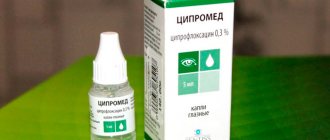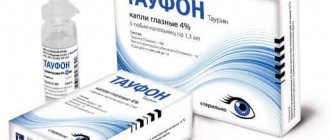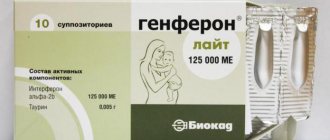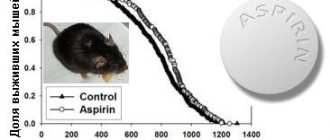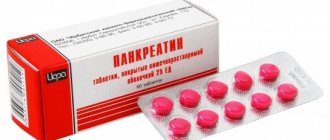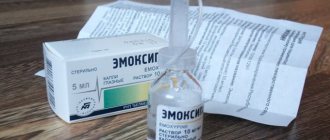Albucid eye drops belong to the pharmacotherapeutic group of antimicrobial drugs (bacteriostatic antibiotic). The action of the antibiotic is due to the bacteriostatic effect. Albucid is used for a number of ophthalmological diseases. In addition, some experts allow its use in the treatment of rhinitis of bacterial origin, including in children. The use of Albucid is permitted in all age groups, including newborns.
Pharmacological action and composition of the drug
Albucid, also known as Sulfacyl sodium, which also has the non-proprietary name Sulfacetamide, is an antibiotic with a wide spectrum of effects.
The use of a drug that has anti-inflammatory, antimicrobial and antibacterial effects helps to destroy pathogenic microorganisms and various types of bacteria that affect the eyes. This effect is achieved due to the ability of the drug to disrupt the production of nucleic acids, as a result of which further proliferation of gram-negative and gram-positive cocci is prevented.
In addition, the local effect of the anti-inflammatory drug helps eliminate hyperemia and swelling of the eyes and eyelids.
The level of sulfonamide concentration required for the treatment of ophthalmic diseases is observed within 30 minutes after using Albucid.
general information
Albucid eye drops are widely used in ophthalmology for the treatment and prevention of bacterial lesions of the organ of vision.
A wide range of pathogenic microorganisms are sensitive to the use of Albucid.
The active ingredient of this medicine is sulfacetamide, also known under the trade name Sulfacyl sodium (Albucid is a 30% solution of sulfacetamide).
Release form: eye drops in dropper bottles with a volume of 5 or 10 milliliters. When selling the drug, an annotation is attached to the packaging.
Albucid is characterized by a predominantly local effect, distributed in the tissues of the eyeball. However, some amounts of the drug are also found in the systemic circulation.
When is it prescribed?
The use of Albucid is due to the presence of ophthalmological diseases of viral and bacterial etiology and for the treatment of eyes from purulent inflammation. The following pathological conditions are indications for the use of these eye drops:
- conjunctivitis;
- eye damage from bacterial or viral agents;
- purulent foci affecting the cornea;
- barley;
- redness of the white of the eye;
- blepharitis;
- blenorrhea;
- ophthalmological pathologies caused by chlamydia and gonorrheal pathogens;
- clogging of the eyes, getting foreign objects into them;
- chronic eye fatigue.
In exceptional cases, otolaryngologists prescribe Sulfacytamide for therapeutic effects against runny nose (rhinitis) in young children.
Indications for use
In ophthalmology, Albucid is widely used for the following diseases:
- conjunctivitis (including secondary bacterial lesions of the conjunctiva in childhood),
- bacterial infection of ulcerative lesions of the cornea of the eye (can also be used to prevent secondary infection of corneal ulcers),
- bacterial infection of the tissues of the eyelids,
- prevention of infection of the mucous membrane of the eye due to its injuries,
- damage to the organ of vision by chlamydial and gonorrheal infections in adults,
- blenorrhea in newborns (both for therapeutic and preventive purposes).
Directions for use and dosage
The purchase of drops is allowed without a special prescription. However, independent use of Albucid requires careful study of the instructions for use of the drug in order to avoid the manifestation of negative symptoms - itching, burning, hyperemia. The dosage is calculated depending on the patient’s belonging to different age categories:
- for infants, drop 1 drop into each eye;
- adult patients - 2 drops up to 4 - 5 times a day;
- for the treatment of conjunctivitis on the first day, multiple doses are prescribed with an interval of no more than 3 hours; further treatment is three times the administration of drops over 5 days.
Following the recommendations set out in the annotation for the drops ensures their high efficiency and dynamism in eliminating inflammatory processes in the organs of vision.
Medicinal properties
The antibacterial effect of the drug is provided by the main component of ophthalmic drops - a derivative of the sulfonamide group. The drug has an extensive antimicrobial effect on many pathogens of various etiologies. Also exhibits a bacteriostatic effect.
The mechanism of action of eye drops is the ability of sodium sulfanilamide to enter into an antagonistic relationship with PABA and simultaneously inhibit dihydropteroate synthetase. Thanks to these processes, the synthesis of tetrahydrofolic acid is blocked, without which the formation of purines and pyrimidines is impossible. As a result, the formation of complete RNA and DNA in pathogenic microorganisms is disrupted, the growth of the bacterial population is inhibited and then suppressed. Gram-positive and gram-negative pathogens exhibit sensitivity to the drug.
After instilling the medication into the lower conjunctival sac of the eye, the substance penetrates into the intraocular space, where it exerts its antimicrobial effect. Despite local activity, part of Albucid can pass into the circulatory system. The process occurs especially quickly with inflammation of the conjunctiva.
Side effects and overdose
In rare cases, the following negative symptoms occur during the use of Albucid:
- discomfort due to lacrimation;
- painful sensations;
- cutting, burning, itching.
There is a possibility of developing an allergic reaction, manifested by redness of the whites of the eyes and swelling of the eyelids.
In case of an overdose of the drug, irritation of the eye shell and the side symptoms listed above are observed. Such discomfort can be eliminated without special measures, provided that the dosage of the medication prescribed in the Instructions is reduced.
Analogs
To choose the most effective remedy for conjunctivitis and ophthalmic infections, you need to contact your treating specialist.
Sulfacyl sodium
Vial, Synthesis, Update, Yuzhfarm, Alvis (RF)
Average price: fl. (5 ml) - 44 rub., (10 ml) - 37 rub., bottle-cap. (5 ml) – 32 rub., (10 ml) – 34 rub., tube-drop. (2 pcs. 1 ml) – 29 rub.
The antibiotic drug is an analogue of Albucid for the eyes. Produced on the basis of sodium sulfacyl, it is an antibiotic. Prescribed to eliminate infectious lesions of the organs of vision. Allowed from the first day of life.
In newborns it is used to prevent and treat inflammation and blenorrhea.
Pros:
- Indicated for children
- Safe, cheap and effective remedy
- It helps a lot.
Minuses:
- It burns and stings the eyes.
Price in the Russian Federation and holiday conditions, analogues
The cost of the medicine depends on the volume of the bottle. The price of the drug is affected by the region of residence.
The average price of drops in a 5 ml bottle within the Russian Federation is approximately 50 rubles. A 10 ml package costs more - approximately 70 rubles.
The expiration date of the drug is indicated on the packaging. Once opened, it is good for 1 month. The bottle with the product should be stored in a dark place at a temperature of 8 to 15 degrees.
Dispensed in pharmacies without a doctor's prescription.
Medications with similar effects include Normax, Oftaquix, Tobrex and Levomycetin.
special instructions
Contact lens wearers should be especially careful when using sulfacetamide eye drops. Before instillation of Albucid (Sodium Sulfacyl), contact lenses must be removed, otherwise they may lose transparency. You can put on contact lenses no earlier than half an hour after instillation. Any infectious-inflammatory disease of the organ of vision requires refusal to wear contact lenses until complete recovery.
Pharmacists warn of possible allergic reactions to sulfacetamide in patients who are sensitive to furosemide, sulfonylureas (synthetic antidiabetic drugs), saluretics (thiazide diuretics) and carbonic anhydrase inhibitors.
Albucid should not be used by patients who have individual intolerance to drugs from the sulfonamide group.
An opened bottle of Albucid or Sulfacyl sodium can be used for therapeutic purposes for a month. After 28 days, the medicine must be discarded, even if part of the bottle remains unused.
In the pharmacy chain, eye drops with sulfacetamide are available without a prescription. It is recommended to store drugs in this group at a temperature of 15 to 25°C. If there are small children in the family, the first aid kit with medications should be kept out of their reach.
Efficacy of the drug
Sulfacyl sodium is highly effective in the treatment of infectious eye inflammation in adults and children. This is evidenced by numerous reviews. For example, pronounced symptoms of conjunctivitis disappear after 2 days of use.
In pediatric practice, drops with sulfacetamide are often prescribed for children to instill into the nose for rhinitis caused by a bacterial infection. Parents are satisfied with the result of this therapy, as children have a positive effect.
Among the disadvantages, patients note a burning sensation in the eyes after instillation.
6 Use during pregnancy and lactation
Sulfacyl sodium is officially approved for use during pregnancy and breastfeeding. However, the instructions contain a caveat that use is permitted if the potential benefit outweighs the possible harm.
Clinical trials have not been conducted on pregnant and lactating women, so the drug cannot be called absolutely safe.
At the same time, experiments were conducted on animals, during which no negative effects on the fetus were detected. As a result of many years of observations of women and children, it was possible to establish that the product does not have any adverse effects. Indications for use, duration and dosage in pregnant women are similar to those prescribed for adults.
Contraindications and side effects of Albucid eye drops
It is not recommended to use if you are hypersensitive to the components of the drug. In exceptional cases, drops may cause eye irritation. This will manifest itself in profuse lacrimation, itching and burning. If such symptoms occur, you should stop using the drug and seek additional help from your doctor. Such side effects are very rare with Albucid antibacterial eye drops.
Analogues of the drug have similar side properties and contraindications. Below we will present the most popular medications that can replace Albucid.
Analogues of the drug
If Albucid drops are not available in your home medicine cabinet, and the nearest pharmacy is far away, you can use one of the following analogues:
- Levomycetin is a broad-spectrum antibiotic that is effective against Salmonella, streptococci, staphylococci, Yersinia, Klebsiella and other types of pathogenic pathogens. Drops are used to treat conjunctivitis, keratitis and blepharitis of a bacterial nature. The composition includes components such as chloramphenicol and boric acid. The drug is instilled 1 drop into the conjunctival sac, slightly retracting the lower eyelid of the affected eye. Frequency of use: 3-4 times a day. Average price: 10-20 rubles (10 ml).
- Tobrex is a broad-spectrum antibiotic from the aminoglycoside group. At low concentrations it acts bacteriostatically (i.e., it inhibits the growth and reproduction of bacteria), at higher concentrations it is bactericidal (causes the death of infectious agents). The drug is used to treat eye diseases of bacterial etiology. Main component: tobramycin. The drug is instilled 1-2 drops into the affected eye. The procedure is repeated every 4 hours. Approximate price: 185 rubles (5 ml).
- Tsipromed is an antibacterial drug from the group of fluoroquinolones, active against various types of bacteria. Active ingredient: ciprofloxacin. The product is used 1-2 drops 4-8 times a day. The course of treatment is 1-2 weeks. Average price: 145 rubles (5 ml).
Albucid drops are an effective remedy in the fight against eye diseases of bacterial etiology in children. The drug is easy to use (since it contains a dispenser attachment) and has virtually no contraindications. The main thing is not to self-medicate and use only the dosage prescribed by the doctor.
Albucid analogues
Phloxal
A good antibacterial agent from the fluoroquinolone group, with a wide range of action, also used for infectious conjunctivitis, blepharitis, keratitis, etc. (acute red eye syndrome). Floxal eye ointment is also available.
Tobrex
The active ingredient in these eye drops is tobramycin. The pharmacological action is similar to the action of Albucid, the only difference is in the concentration and in the fact that the drug has a more active effect on viruses. And also at a price that is 2-3 times higher than the price of Albucid. And after using Tobrex, restrictions on driving vehicles apply.
But the drug has fewer contraindications and has a milder effect on the inflamed tissues of the eye, at least in terms of less burning of the mucous membranes at the initial stages of instillation.
Okomistin
It is also an analogue of Albucid, but only in terms of its effect on microflora. The basis of Okomistin is the popular antimicrobial drug Miramistin, only in a different, weaker concentration that eliminates irritating effects on the eyes.
Vitabact
Anti-inflammatory drug with picloxidine as an active substance. It is used for purulent manifestations in the eyes of newborns. It has a milder effect than Albucid.
Sodium sulfacide
Essentially, this is Albucid - with a different trade name. Pharmacy in Russia is simply moving away from the name Albucid in favor of sodium sulfacyl.
Azidrop
Azidrop (Azithromycin dihydrate). The drug, which belongs to the 2nd generation acrolide-azolides, acts by inhibiting the synthesis of bacterial proteins, preventing the translocation of 50-S peptides into the ribosomal subunits of cells.
Colbiocin
A combination product consisting of a mixture of compatible antibiotics Chloramphenicol, Tetracycline, Colistin. Indicated for use in purulent bacterial and catarrhal conjunctivitis, trachoma, blepharitis and blepharoconjunctivitis, dacryocystitis, bacterial keratitis, septic ulcer of the cornea.
Nettatsin
Refers to aminoglycoside antibiotics.
It has a strong intracellular effect on the bacterial flora, blocking, like azithromycin, the ability of polyribosomes to synthesize protein by binding to their 30-S subunits. The main effect of the drug is on gram-negative strains.
Nettavisk
A variant of the antibiotic Nettacin, available as an eye ointment.
Alternatives to albucid include Oftalmoferon or Levomycetin.
Indications and contraindications
The use of Albucid is justified for inflammatory eye diseases that are caused by pathogenic microorganisms.
Indications for use:
- blepharitis;
- conjunctivitis, including purulent;
- keratitis;
- purulent ulcers of the cornea.
Albucite drops can be used to prevent infectious and inflammatory processes after eye surgery, as well as to prevent purulent inflammation of the eyeball in newborns.
It is possible to use Albucid for barley.
Contraindications to the use of drops is individual intolerance to any component in the composition of the drug.
To obtain the expected ophthalmic effect, you should not use Albucid simultaneously with Tetracaine or Procaine. These drugs weaken the effect of the antibiotic. You cannot simultaneously instill Albucid and drops that contain silver ions, for example, Protargol or Crotargol.
What kind of runny nose does the remedy help cure?
This lightweight antimicrobial solution is an excellent alternative to heavy antibiotics. Being a local antiseptic, it is not effective for rhinitis of viral etiology (in the first two to three days from the onset of ARVI) and allergic rhinitis.
Albucid nasal drops for children are indicated for use:
- in cases of prolonged bacterial infections in the sinuses, accompanied by the release of viscous yellow-green mucus, sometimes with a putrid odor;
- with complex therapy of adenoiditis;
- for the treatment of injuries to the nasal mucosa;
- as a means of improving the patency of the nasal passages in newborns.
Release form
- Albucid is available in three dosage forms:
- eye drops;
- ointments for external use;
- solution intended for intravenous and intramuscular injections.
The drug in the form of a solution is indicated for systemic infectious pathologies, for example, pneumonia or damage to the urinary tract (including purulent forms). For the treatment of ophthalmic pathologies of infectious origin, the drug is used only in the form of ointments and drops.
The active components of Albucid penetrate the tissues, mucous membranes and liquid structures of the eye. Even in minimal concentrations, sodium sulfacyl enters the systemic bloodstream through the affected conjunctiva, so patients suffering from hypersensitivity to furosemide and other diuretics should be prescribed the drug with extreme caution.
Contraindications
Do not use Albucid if you have (or previously had) an individual intolerance to sulfonamides: the body sometimes “remembers” one single allergic reaction until the person’s death, that is, for the rest of his life. Don't neglect this rule! This does not go away with age, but may, on the contrary, even intensify!
There are known cases of a severe allergic reaction from an overdose in youth in a person who often suffers from a sore throat. The patient refused to take streptocide (with which he was treated), but 42 years later, at the age of 62, he also took sulfademitoxin for a sore throat. The result is Quincke's edema. Only an urgent injection of dexamethasone, which was in the home medicine cabinet, and the subsequent arrival of an ambulance saved me.
Of course, drops in their systemic effect on the body cannot be compared with taking the drug orally, with intense absorption of the drug dissolved in saliva or washed down with water through the mucous membrane of the esophagus or stomach. But in the case of an acute allergic reaction to the mucous membrane of the eye or its sclera, it will also, as they say, “not seem like much”: hyperemia of the eyelids, redness of the eye and swelling of the surrounding tissues are also quite dangerous things, at least for visual health in addition to the problems that existed before use of the drug.
It is also undesirable to use the drug for passive (venous) hyperemia of the eyelids or sclera, due to the ability of Albucid, like any sulfonamide, to take oxygen from tissues - the oxygen content in venous blood is already minimal. Signs of venous hyperemia are cyanosis of the mucous membranes.
The solution would be to use a solution of Albucid of lower concentration (20% instead of 30%, or diluting it with sterile distilled water by 1/3 or half).
Restrictions
It is necessary to remove contact lenses before instillation: any foreign body (and contact lenses are such a foreign body) will cause additional mechanical irritation in addition to the chemical irritation that is inevitable when using Albucid. It is better to take it off 15 minutes before instilling the drug into the eyes and put it back on no earlier than 40 minutes. It is better to avoid using soft contact lenses altogether during treatment, due to the negative impact of the drug on their softness, flexibility and light transmission.
To the already mentioned ability of Albucid to be a carbonic anhydrase inhibitor, one can add that the body can also react to sulfonylurea, furosemide, and thiazide diuretics.
special instructions
The medicine is freely available in pharmacy chains; you do not need a prescription to purchase it.
The dosage is based on the age of the patients. If children under 1 year of age are instilled into the eye with blenorrhea with Albucid AD with a reduced concentration, and no more than 2 times a day, then for children under 12 years of age the frequency of instillations can be increased to 4 times with a drug of 30% concentration or up to 6 times - 20%. In all cases – 1 drop. Adults can drip 30% albucid into the eyes up to 6 times a day, 1 drop at a time.
In the case of 6-fold use, the interval between introducing drops into the eye should not be less than 4 hours! If it is not possible to get up to administer drops at night, it is better to limit yourself to 4 or 5 drops, instilling 2 at a time in the morning and evening!
As the condition improves and inflammation decreases, the frequency of instillation is gradually reduced: once every 6 hours, once every 8 hours, etc.
In the inflamed conjunctiva with purulent conjunctivitis, 2 drops are injected into the eye every three hours. The concentration of the drug should be chosen based on its individual tolerance.
Under no circumstances should Albucid and its full analogues be prescribed together with drugs that contain silver salts, due to the complete incompatibility of Albucid with such drops!
Storage rules
Unlike many other eye drops, especially those based on antibiotics (which are clearly indicated for storage in the refrigerator!), Albucid is strictly prohibited from being stored in the refrigerator or, in general, in any conditions where the temperature can drop to +4⁰C for more than 12 hours. After such storage, you can safely throw it away; in the cold, it loses its medicinal properties.
In a bottle with an unbroken seal, the drug is stored at room temperature for up to 2 years. If the bottle has been opened, the preservation of the medicinal properties of the drug is guaranteed for 1 month.
Do not touch the eye with the nose of the dropper during instillations! This way, the solution can become contaminated with bacterial decay products, which are sure to be present in the diseased eye.
The drug should not be used for more than 10 days in a row, otherwise the bacterial flora will adapt to its effects and the effectiveness of treatment will decrease significantly. If Albucid does not help during treatment within such a period, then it is inevitable to contact an ophthalmologist to correct the treatment and prescribe another antibacterial agent for the eyes.
It is not advisable to use Albucid with local anesthetic agents in the form of drops, sprays, etc.
Can it be used for prevention?
Albucid eye drops can be used for newborns for prophylactic purposes to prevent eye infection after the baby passes through the mother's birth canal. The first time the drug is instilled into the child in the maternity hospital to prevent blenorrhea. This disease is quite dangerous; without treatment it leads to blindness.
Albucid must be instilled into the eyes of newborns if the mother was diagnosed with gonorrhea during pregnancy.
According to the instructions for using the drug, babies are instilled with 1-2 drops in each eye within 2 hours after birth.
To prevent conjunctivitis, it is worth using more gentle eye drops for children.
Pharmacological properties
Albucid drops
The main active substance of the drug belongs to the group of sulfonamides. It has antimicrobial properties and the ability to penetrate well into the eye tissue. Sulfacetamide stops the proliferation of pathogenic microbes and suppresses their vital activity. The substances are susceptible to gonococcal infection, chlamydia, staphylococci, streptococci, E. coli and others.
As a preventive measure, you can use effective eye drops to improve vision.
For reproduction and vital activity, pathogenic microorganisms require the presence of para-aminobenzoic acid . By replacing this important substance, the sulfonamide drug disrupts the synthesis of amino acids in the body of bacteria, which leads to their death.
Arutimol is prescribed for open-angle and closed-angle glaucoma.
A characteristic feature of the medicine is the appearance of a whitish coating of salts on the eyelashes after instillation. This is normal and does not cause discomfort. Once dry, the white crystals can be easily shaken off the eyelashes.
